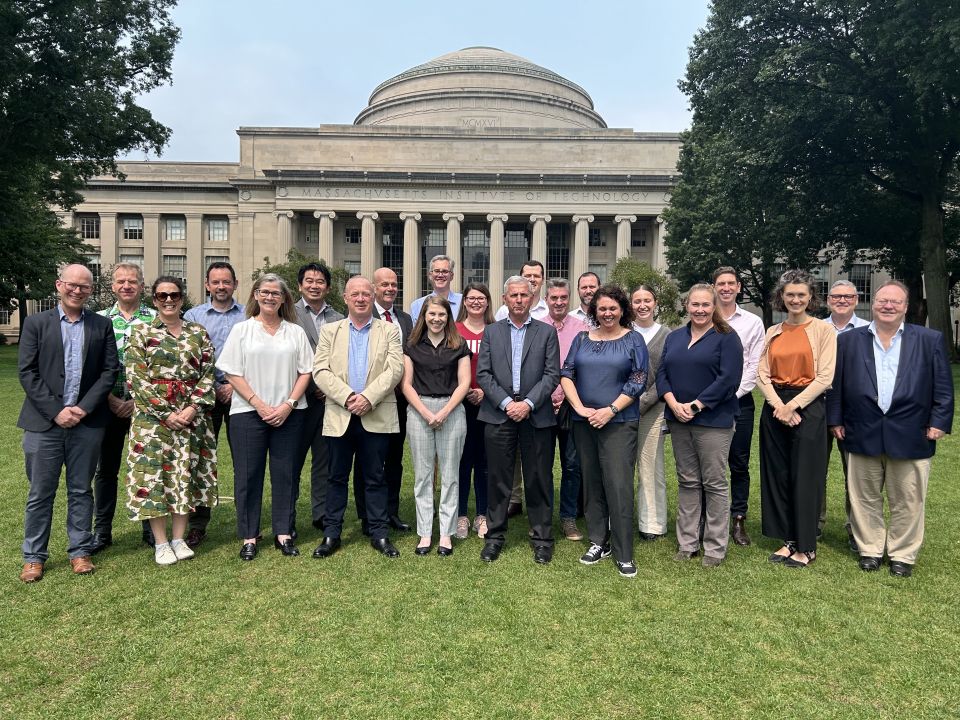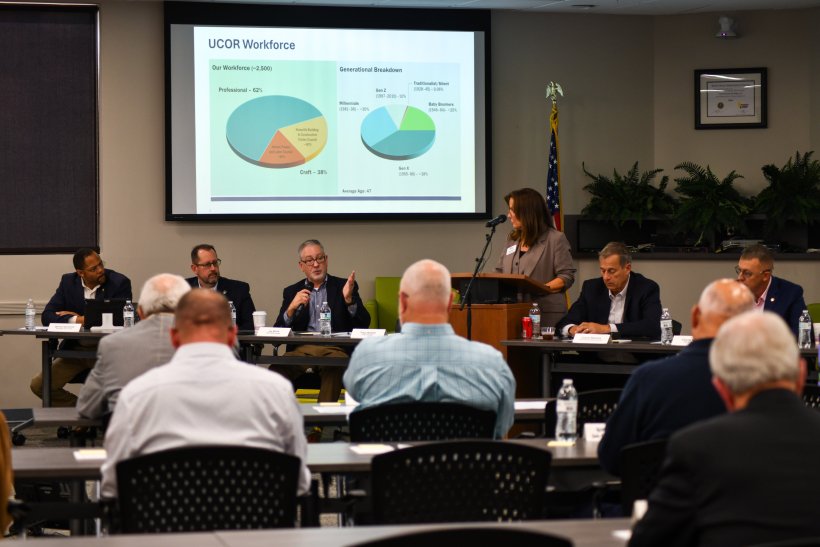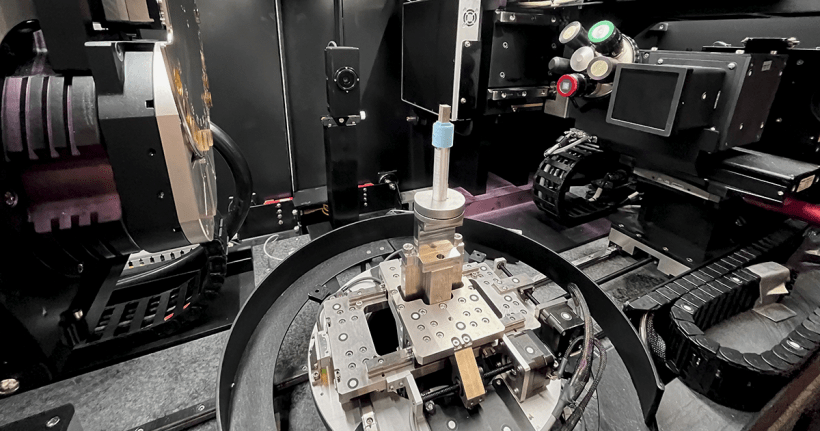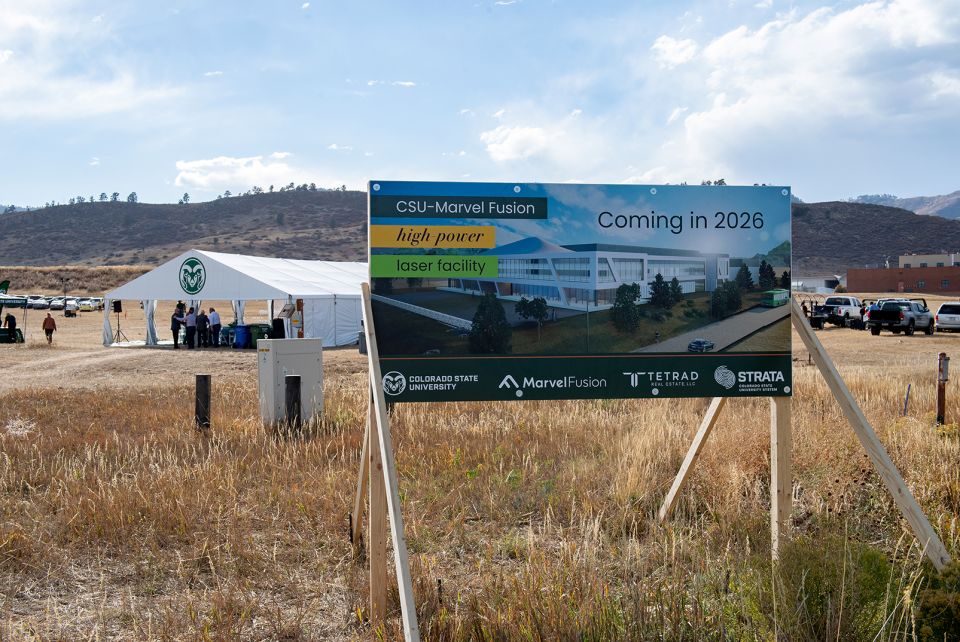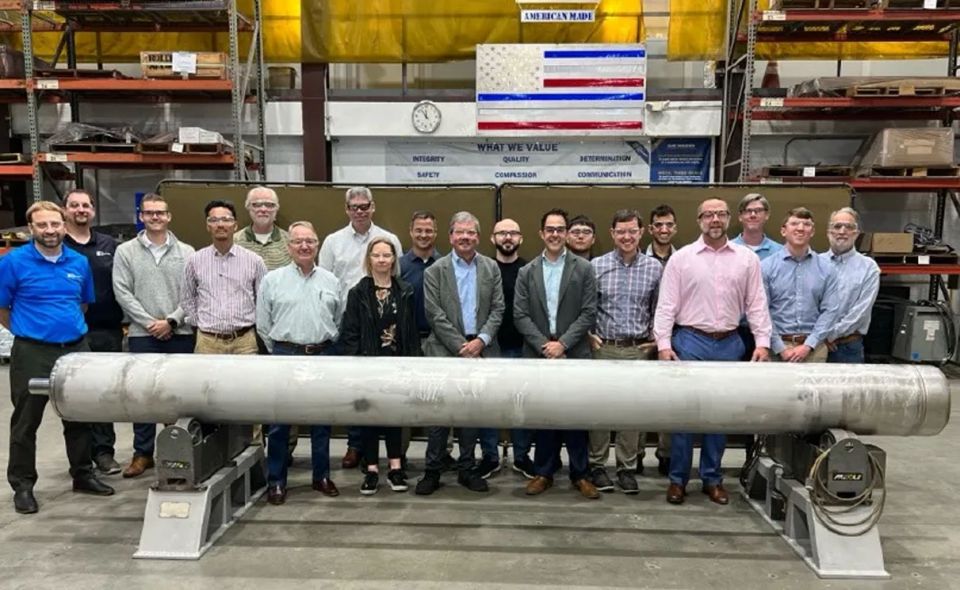A glass test cell that was fabricated to visualize noble gas behavior in a stagnant molten salt column. (Photo: ORNL)
Transparency is one advantage of certain molten salts that could serve as both a coolant and fuel carrier in an advanced reactor. For scientists studying molten salt chemistry and behavior at the laboratory scale, it helps if the test vessel is transparent too. Now, Oak Ridge National Laboratory has created a custom glass test cell with a 1-liter capacity to observe how gases move within a column of molten salt, the Department of Energy announced August 5.
Sixty years ago, ORNL was busy constructing and preparing to operate the Molten Salt Reactor Experiment, which first went critical in June 1965. Experience with the MSRE helped prove the viability of molten salt as a reactor coolant, but many questions remain before the technology can be deployed commercially. Data collected from new experiments at ORNL will be used to help verify existing computer codes and modeling software to better predict the overall performance of a new generation of molten salt reactors.
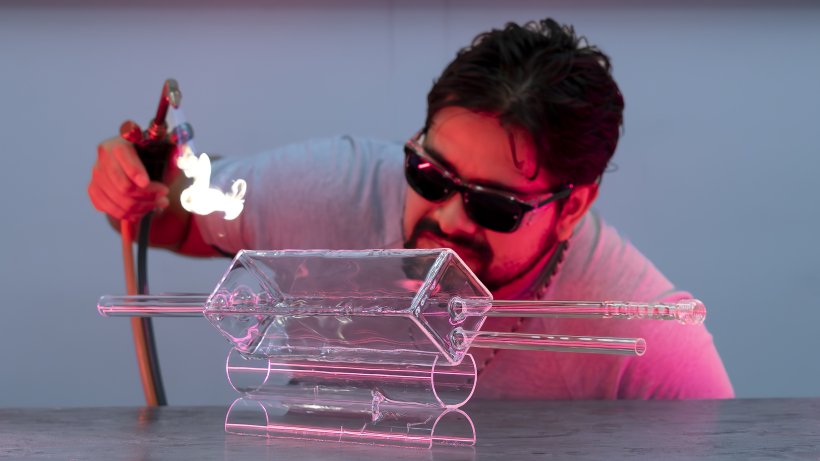
Oak Ridge National Laboratory scientific glassblower Carlos Rodriguez Flores uses a blowtorch to fabricate a glass test cell for a molten salt visualization experiment. (Photo: ORNL)
On the bubble: In a molten salt reactor that uses a liquid fuel dissolved in a molten salt coolant, nuclear and chemical reactions can result in gases that bubble out of the molten salt, which can impact reactor neutronics and thermal hydraulic performance.
To better understand bubbles in molten salt, ORNL researchers have designed and developed a customized glass test cell at the lab’s glass shop that can hold up to one liter of liquid molten salt. Small helium and krypton bubbles injected into the cell can help researchers observe how they moved through the column, according to the DOE.
Of interest in experiments of this kind are gas bubble velocity, size distribution, and interactions with neighboring bubbles. The bubbles are captured in action using high-speed cameras. The resulting images provide unique insights to help improve and validate simulation tools for molten-salt-fueled systems.
“Understanding gas generation and transport in molten salt reactors is essential to optimizing their performance and safety,” said Daniel Orea, an R&D associate in the Energy Systems Development Group within the Nuclear Energy and Fuel Cycle Division at ORNL. “This unique glass test cell allows us to overcome certain engineering challenges caused by the high temperature and composition of salt and its two-phase liquid glass system.”
Teamwork: Researchers contributing to the project included Daniel Orea, Joanna McFarlane, and Kevin Robb, along with scientific glass blower Carlos Rodriguez Flores. The research project was supported through the Department of Energy’s Molten Salt Reactor Program, which works to accelerate the research, development, and deployment of molten salt reactor technologies in the United States using resources at ORNL and at other national laboratories.





